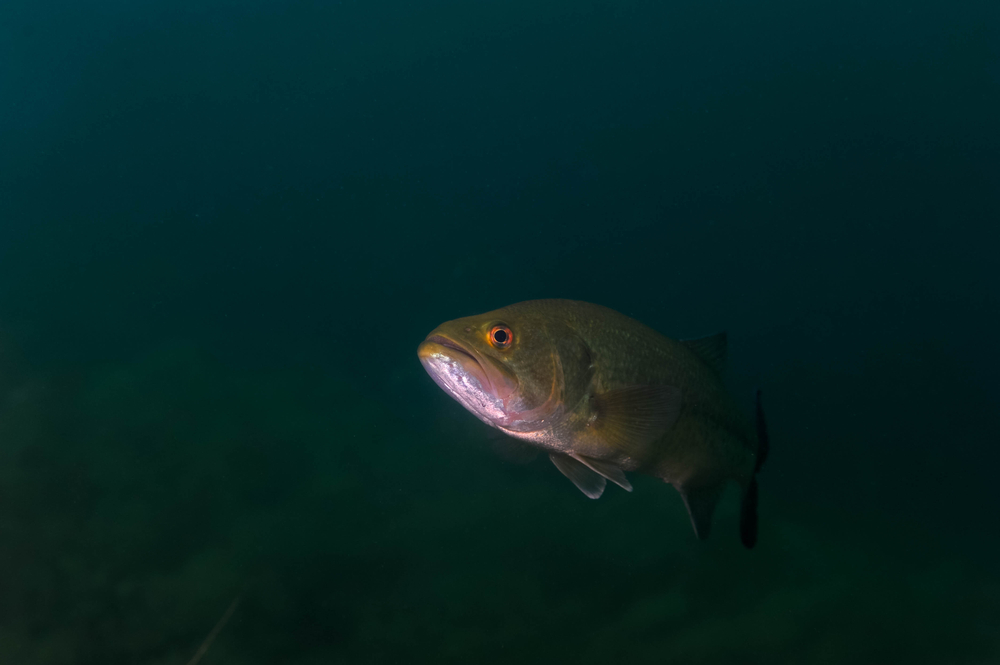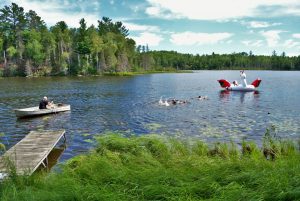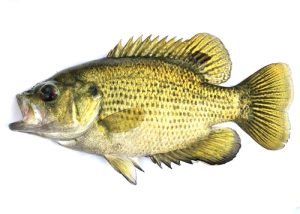Believe it or not, the famous Lake Michigan has more than 130 different species of fish swimming around, or should we say, waiting for your bait?
It’s no wonder anglers gravitate to this lake as their options are not just varied but include some delicious and high-caliber fish.
We’ve decided to list the 20 most common fish species in Lake Michigan so you can learn all about them.
Table of Contents
1. Largemouth Bass
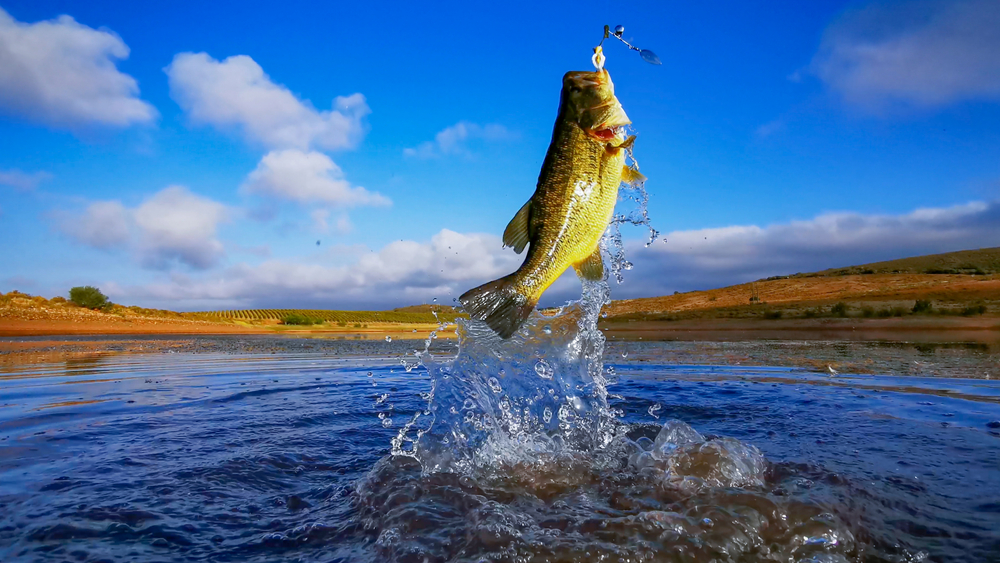
Compared to smallmouths, largemouths prefer rocky environments and river systems, and weedier bodies of water or reservoirs.
You can catch either fish species from the same bodies of water or in the same general area. Both species move to shallow areas in the spring to spawn and can be easily found and enticed into biting before going on the beds.
If you are looking for largemouths specifically, you can usually find them in shallow water, especially around weed beds, fallen timber, or boat docks.
One of the most popular game fish in the United States is the largemouth bass, as it is well-known for its fierce, fighting spirit. Artificial lures work well for catching them, but any live bait will do.
2. Walleye
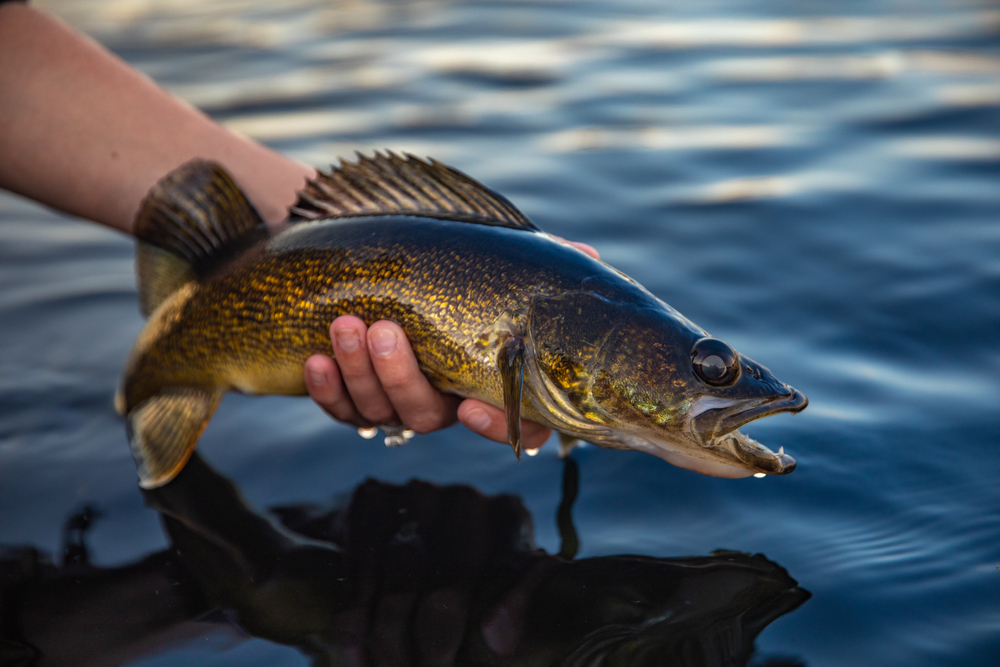
On walleyes, you’ll notice that their anal and lower caudal fins have white tips, and the canine teeth on the dorsal fins split into a spiny and a soft-rayed section. The perch family includes walleye, which are the most well-known species.
Catching the fiercely combative walleye is exciting, and they are delicious to eat. These fish also make excellent year-round sport fishing thanks to their active feeding habits throughout the winter months. Anglers catch five-year-old walleyes that weigh one to three pounds on average.
If you want to catch fish at the beginning of the season, use jigs with a lead top and minnows at the tip or grub bodies made of plastic and fish from the bottom. Throughout the season, switch to trolling and use spinners and crawler harnesses.
3. Yellow Perch
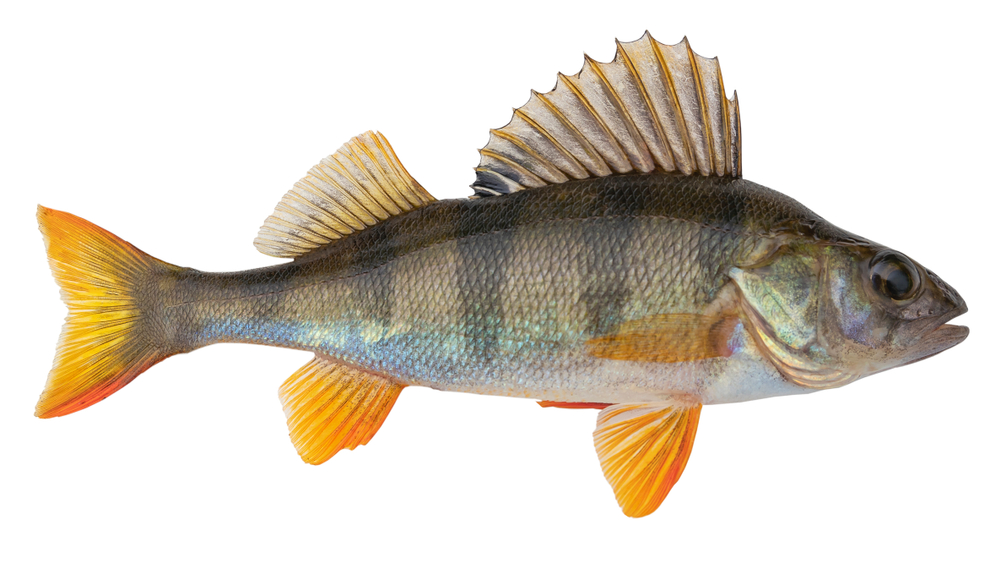
These fish have no canine teeth, seven blackish bars on the sides, two dorsal fins separated into a tapered and soft-rayed portion, and yellow sides.
It’s not uncommon to catch a yellow perch while fishing in Michigan. Perch tend to congregate in groups and prefer the relatively shallow waters close to land.
They are rarely caught in waters deeper than 30 feet, as they prefer shallower waters in the spring and fall.
During the spring and fall, they appear to graze all day and travel to the shore in the morning and evening. They don’t feed or sleep during the night because they prefer to be on the bottom.
Due to their ability to stay active under the ice in both shallow and deeper water, perch presents plenty of opportunities for ice anglers throughout the winter months.
4. Chinook Salmon
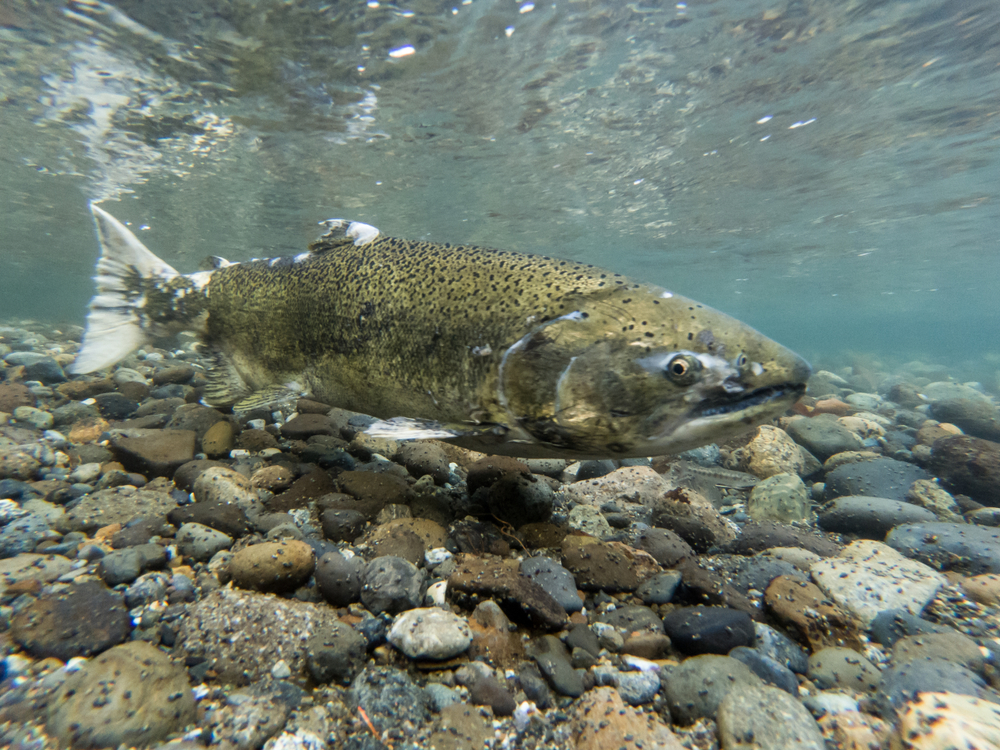
Chinook salmon are notoriously challenging to identify when fishing. Small spots on the upper back and tail, two dorsal fins, an adipose fin (inside the mouth and gums), and 15 to 17 rays on the anal fin are what set this fish apart.
In the Great Lakes, Lake Michigan especially, they are typically caught in deeper water because unlike their cousin the coho, they prefer cooler water temperatures.
Anglers using downriggers often target Chinooks in deeper water once the sun has risen because these fish are somewhat photosensitive.
5. Smallmouth Bass
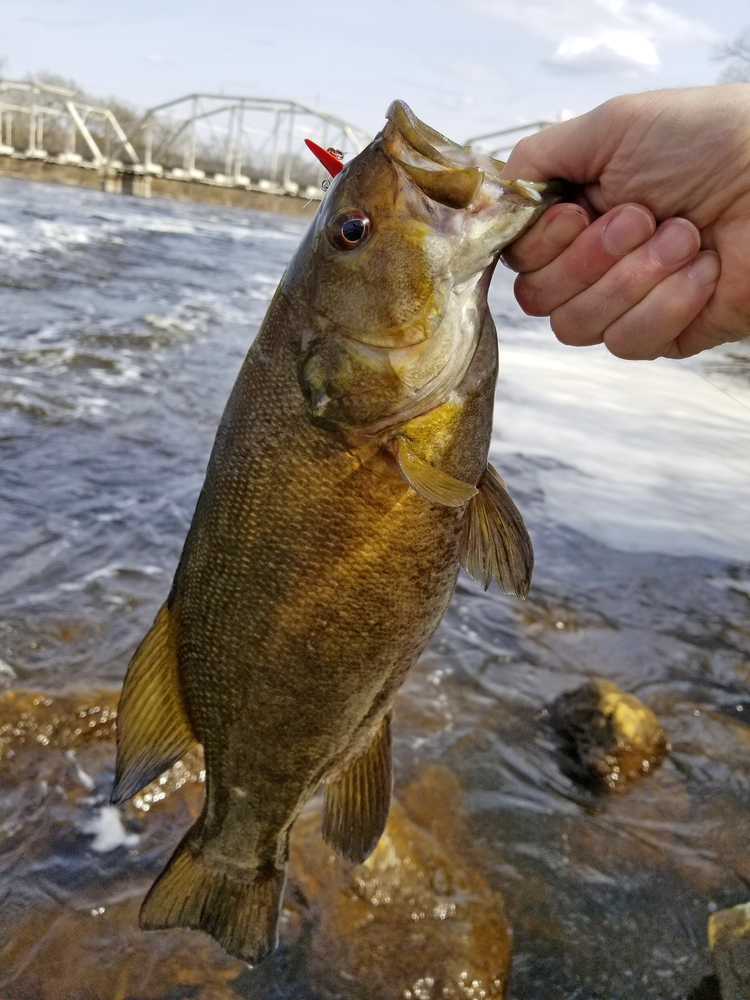
Smallmouth bass, the dominant species in Michigan’s Great Lakes and connecting waters, can be found here in abundance. The size and quantity of smallmouth bass you’ll find along the entire southeast coast, from Port Huron to Lake Erie, is world-class.
Many of the lakes in the northern tier of the Lower Peninsula, as well as many of the rivers in the southern level of the state, have excellent smallmouth fishing.
Most southern inland lakes, as well as many of the lake’s drowned river mouths, have healthy populations of largemouth and smallmouth bass.
6. Bullhead and Catfish
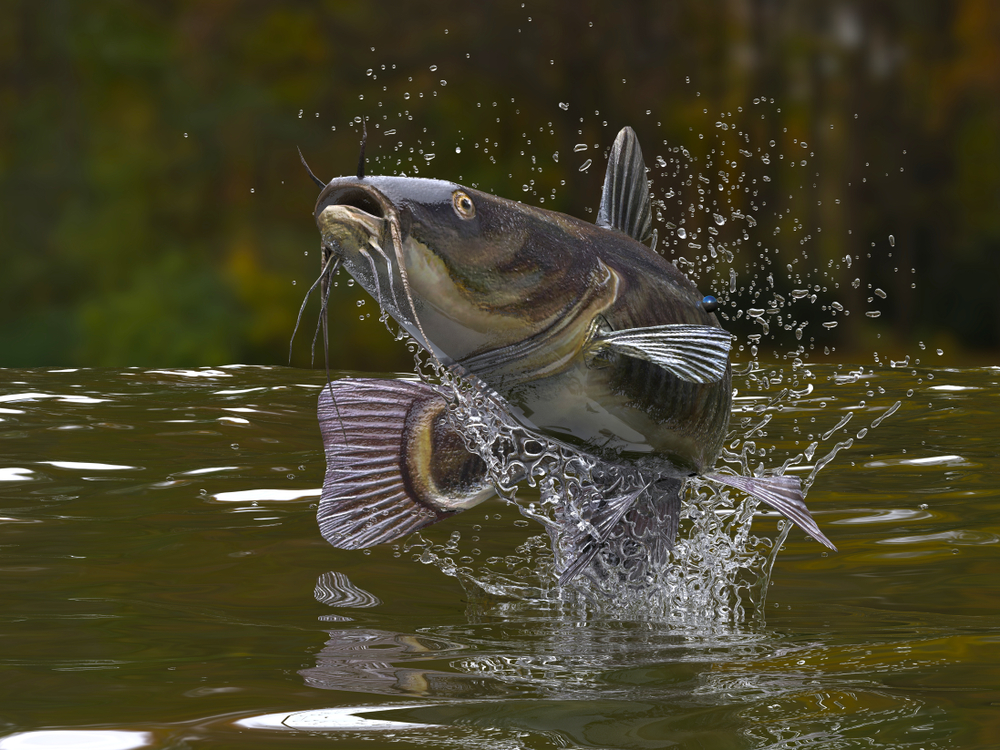
Channel Catfish: The most sought-after catfish is the channel catfish, which has a distinctively forked tail, a body with speckled sides, and two dorsal fins, one of which is fatty. It has barbels (whisker-like sensory organs) around the mouth.
Flathead Catfish: This fish’s color can range from dark brown to yellowish-orange. It differs from other catfish in that it lacks a forked tail. It has a large lower jaw that sticks out a lot. It can reach more than 50 pounds, which is the Michigan state record.
For the most part, you catch flatheads using live baitfish, with prepared or cut baits being used only on occasion. After dark, when flathead catfish are most active, they seek cover under submerged logs or other large structures.
Brown Bullhead: There are no barbels around the mouth on the brown bullhead’s tail, and it has two dorsal fins and an adipose fin. The black to yellowish-brown chin barbels, the regular saw-like barbs on the pelvic spines, and the presence of 21 to 24 rays in the anal fin set it apart from other bullhead species.
You can find brown bullheads in lakes, ponds, and rivers with slow currents of water. Their natural habitat is shallow water with lots of vegetation on or near a soft bottom, but they have been found as deep as 40 feet in the water!
Worms or nightcrawlers are the most common baits used by anglers when fishing near the bottom. Warning: You’ll find sharp spines on bullheads fins, so use caution when handling them.
Black Bullhead: It has a dark shade, like an olive, but the underside is pale, with a partially forked tail. It grows between eight and ten inches in length, with no scales. The spines on its fins are smooth but sharp.
These hungry scavengers will be ready to pounce once the ground thaws in the spring. For easy retrieval, use hook versions that are long-shanked and pliers with needle-nose. You can also cut the line and get your hook back when cleaning.
Hand protection, such as gloves or rags, will help keep the barbs from “stinging” you. Cut bait or nightcrawlers work best. To catch bullheads, look for eddies in lakes or rivers with shallow water. Make sure your bait is well-balanced and rests flat on the bottom.
7. Coho Salmon
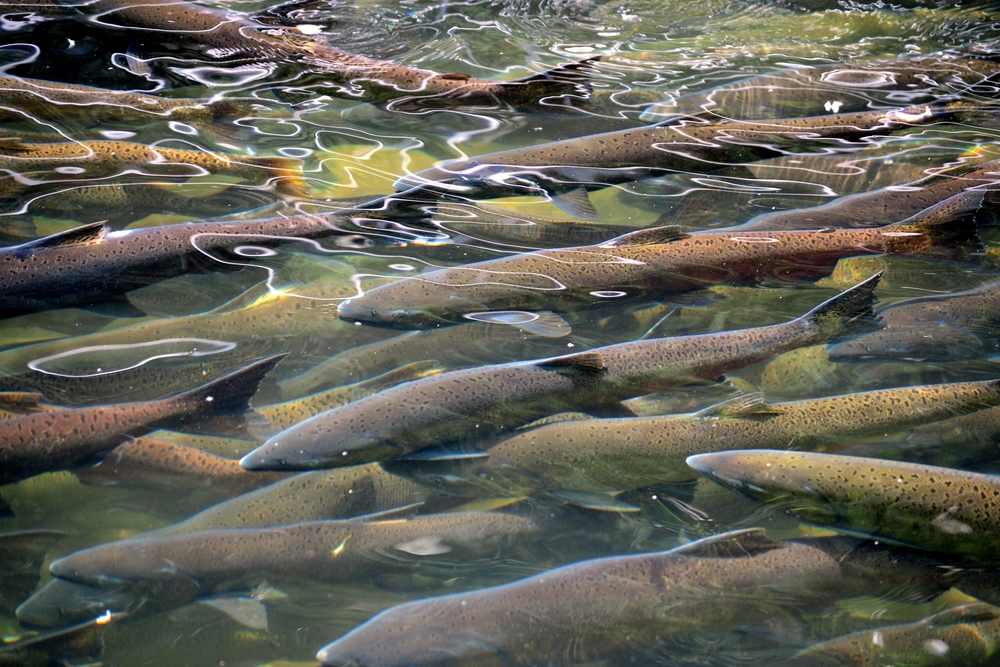
This fish has two dorsal fins, ranging from green to dark blue, with a white underside and silversides. It has white or gray gums between the teeth, but the inside of the mouth is white, and the tongue might appear black.
On the back and sides, as well as on the caudal fin’s upper lobe, you will see little dark dots. The anal fin has at least thirteen rays. Five pounds is the typical weight of an adult Coho salmon caught in Lake Michigan.
Even though the lake’s east side has excellent coho fishing year-round, the best times to catch these fish are in early spring and then again in the latter part of summer to the beginning of fall when the water temperature cools off.
In the spring, fish seem to move in a counterclockwise direction around Lake Michigan. Anglers often use minnows and crankbaits while trolling close to shore or up in the water section offshore in these fisheries.
Anglers who fish with spoons or spawn bags from the piers have a lot of success. Within the Anna River watershed, you experience the best fishing.
Over in Musing Bay, open-water anglers can enjoy good fishing in the spring and fall, as well as on the ice during the winter.
8. Lake Trout

This fish is native to Lake Michigan and has light dots on a gray or black background that get lighter they move down the fish’s side. The stomach is a bright white color. Orange to orange-red is the most common coloration for the lower fins, with a white edge running the length of the fin.
The dorsal fin and adipose fin sit on the darker back. Both lobes of the tail fin are of equal size with a deep fork. There’s a white leading edge and the anal fin between 8 and 10 rays.
Despite their preference for cold water, you can locate lake trout in reasonably shallow water during the spring and fall, when the water temperature is right. Trout anglers use flies, flashers, and spoons to lure fish from the lake’s bottom.
If you’re looking for a good time to catch lake trout, go fishing in the fall on reefs and shoals. However, some go away upstream, and you can see them from a pier or bridge.
9. Rainbow Trout
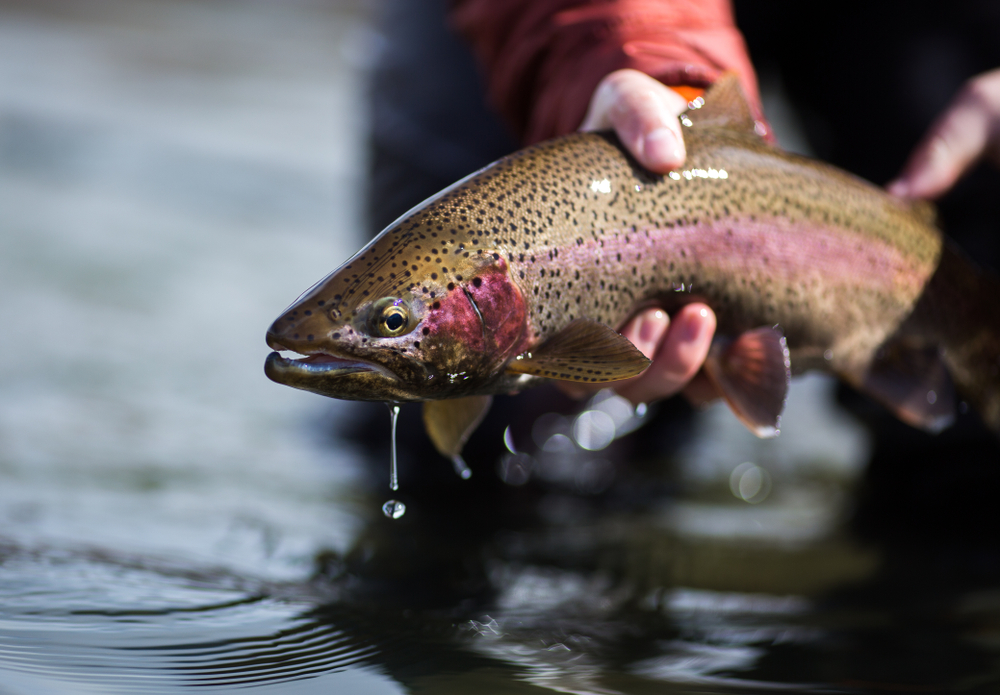
For this fish, small, light spots and rays cover the entire tail, with 10–12 glowing in the anal fin on both dorsal fins, one of which is adipose. Although they’re related to steelhead, they lead vastly different lives as a result of environmental factors.
The inland rainbow trout are the species standard, with the Great Lakes receiving an anadromous type. You can catch them in large lakes using a variety of methods, including artificial and live bait.
Rainbow trout are abundant in various southern Michigan lakes, offering an extraordinary fishery, despite their widespread association with clear-water lakes in the northern section.
Fishing with live bait after dark at the thermocline when the deep water temperature is colder is the primary method.
10. Brown Trout
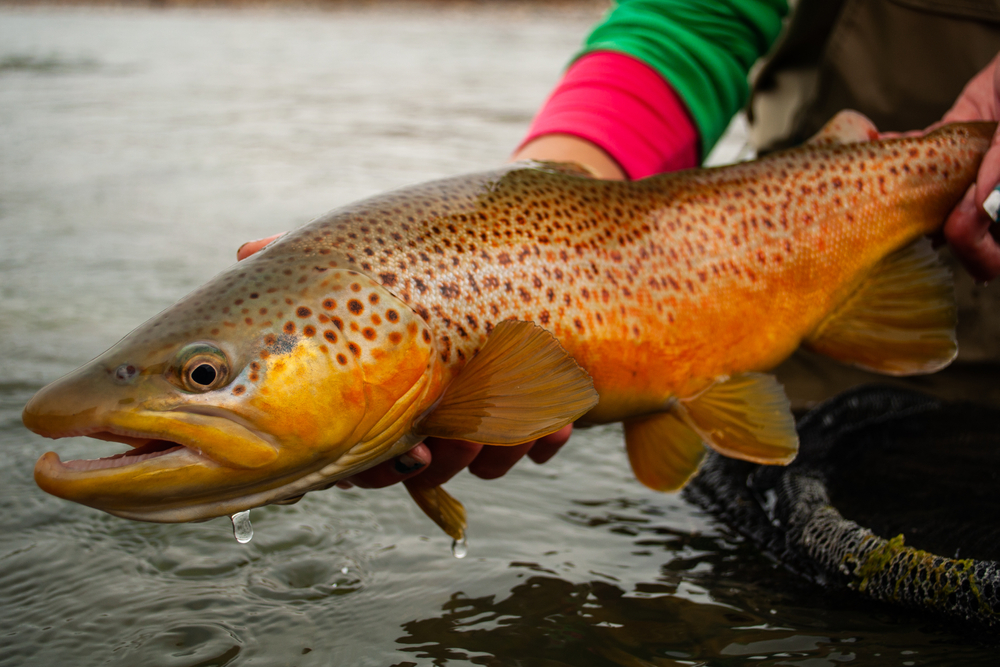
This fish has a wide square tongue, adipose, and dorsal fin, and approximately 12 large teeth. It also has a square tail and an anal fin with about ten rays.
Compared to resident stream dwellers, lake-run browns are primarily silver in color, with fewer body spots. Even though individual trouts might get much more extensive, the average lake run adult weighs around eight pounds.
Fishers employ diverse techniques, from artificial baits and minnow trolling to using live bait at the bottom. Brown trout fishing during early spring is spectacular on the Great Lakes, thanks to the presence of these fish.
Anglers who do minnow trolling are primarily shallow, use live bait, fish from piers, or wade often encounter Brown trout before other species bite.
11. Brook Trout
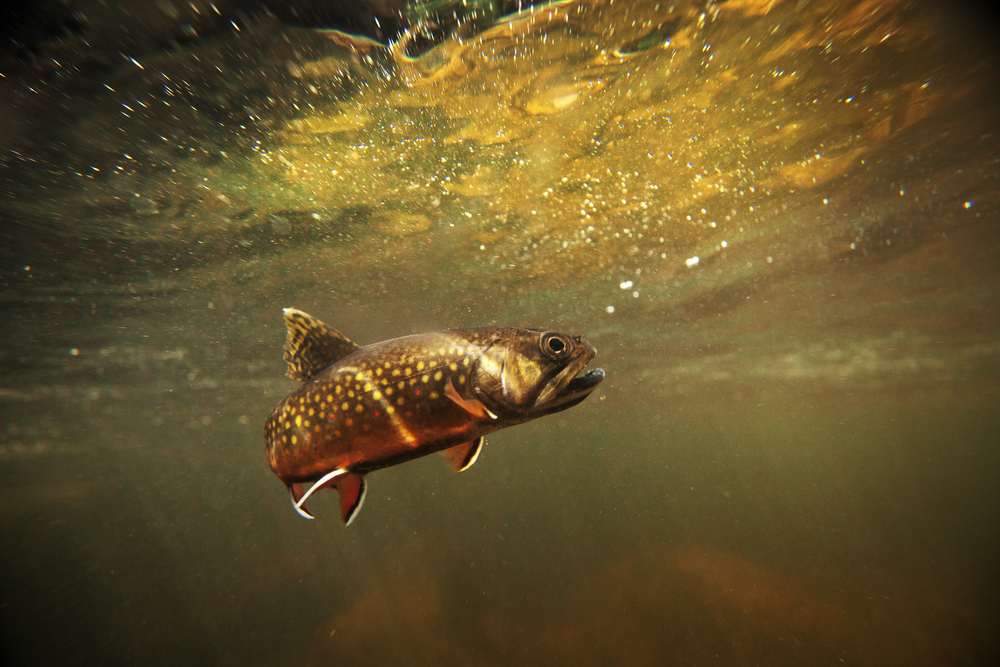
This fish has a huge mouth that projects past the eye and a long, streamlined body. This species also has a silvery-white belly plus wormlike lines along its back that can range from blue-gray to olive or even black at the top.
On their sides, you’ll see red dots with blue halos. The lower fins are reddish-orange, with the front edge being white and the back black. When viewed from behind, the tail fin is either straight or slightly crooked.
Fall is when brook trout grow a little hooked jaw and an intense orange-red coloration on the undersides, contrasted by a black vertical stripe running down the middle.
If you want to catch a brook trout, you’ll need to use a variety of lures and bait to get it to bite. These include spinners, crickets, and worms.
Many streams have them hiding in deep holes and beneath logs or overhanging ridges, where fishers drift worms along the bottom in an attempt to catch them. Spinnerbaits such as this and spoons are the most prominent.
These fish are more nocturnal than other trout species, earning them the nickname “gentlemen trout” among fly fishermen. Brook trout are also known to be tolerant of a wide range of fly patterns.
12. Atlantic Salmon
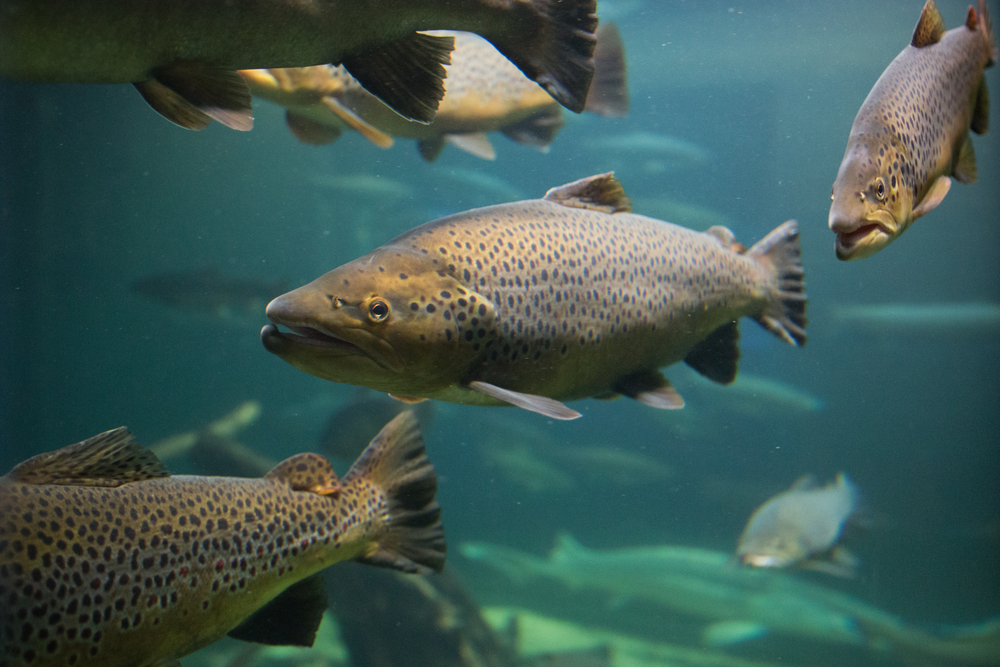
In some cases, you might find it challenging to identify an Atlantic salmon and distinguish it from other fish. The sides of adults have many black speckles, mainly over the lateral line of the body. It has black pectoral fins and about ten rays on the anal fin. The caudal fin might be forked a little.
There are two dorsal fins, one of which is fat. It’s common for the caudal peduncle to be short and narrowed. It has a little, four to six-toothed vomerine tongue with jaws spread to or partially beyond the back of their eye.
In Lake Michigan and other lakes, anglers can catch Atlantic salmon. During October and December, spawning fish make a fall comeback to each site.
13. White Bass
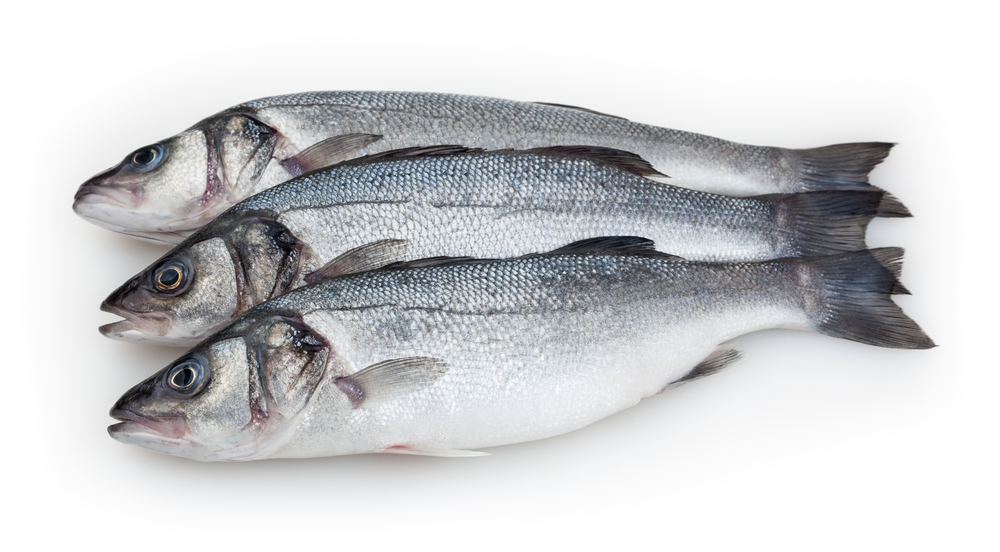
On this fish, the very first dorsal fin has nine spines, horizontal bars on its sides, as well as the lower jaw extending beyond the upper jaw. It also has two dorsal fins, one spiny and the other soft-rayed.
It’s a member of the freshwater Moronidae family, which includes the Yellow, Spotted, Striped, and European seabass, along with the white perch.
Numerous Great Lakes (excluding Lake Superior) and a few inland lakes are home to white bass. As a result, it’s valuable to the St. Clair-Detroit River fisheries and Lake Erie.
From May until the beginning of June, based on winter’s length, is prime time for catching white bass as they leave through tributary rivers to breed.
Minnows, spinners, and spoons are all standard catching methods. All summer, night fishing, whether floating or at the bottom, can be highly successful.
14. Crappie
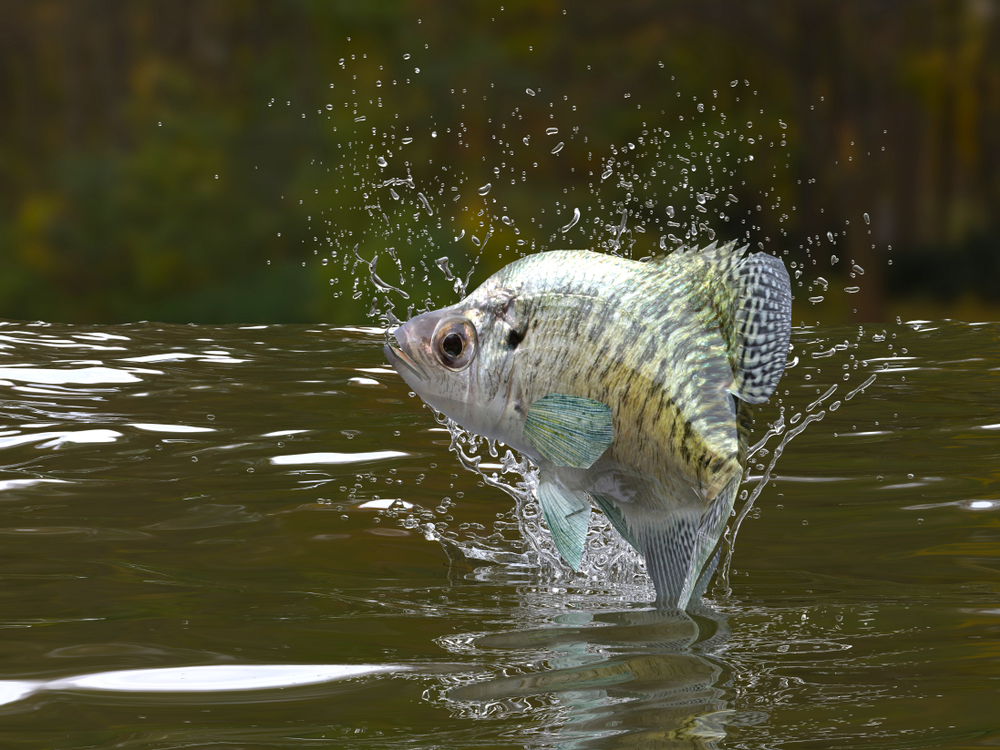
Michigan’s waterways are home to both white and black crappies. The white crappie has markings on its sides that look like vertical bars, whereas the black crappie has spots in no particular order.
If you want to see a fish with many dorsal spines, look for white crappie, which has six, and black crappie, which has as many as eight.
For spring crappie, canals and shallow-water cuts, particularly those with dark bottoms (that warm up more quickly than the main lake), are popular.
Regular crappie, on the other hand, prefer marinas and other well-protected coves. Look for them in reeds and bulrushes, both emergent vegetation that grows in shallow water in the Great Lakes.
15. Pink Salmon
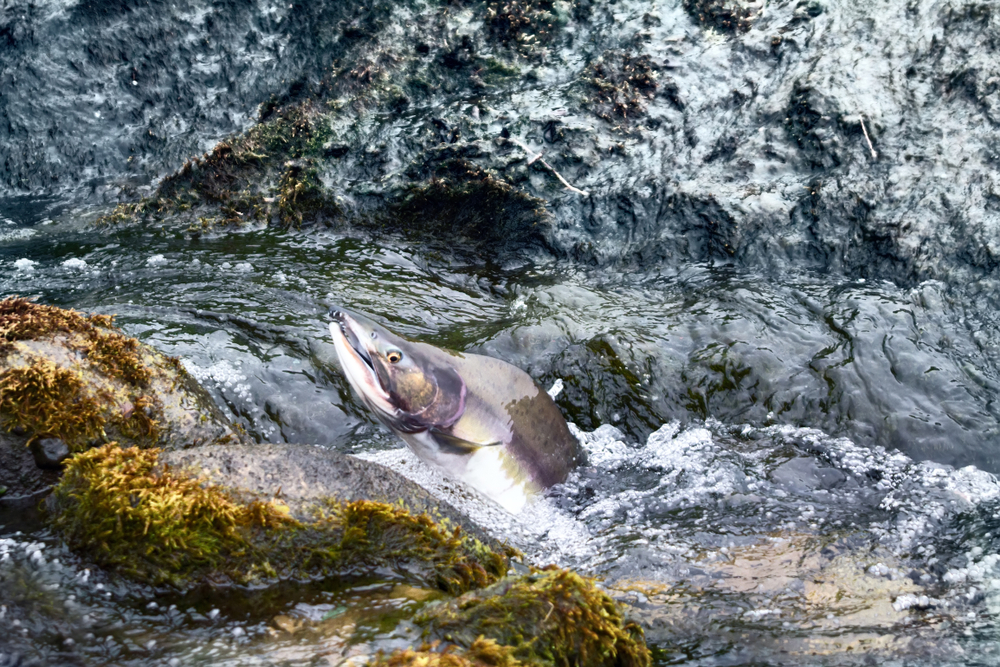
This fish has big, oval-shaped black dots on the back and tails, an adipose dorsal fin (lake-run primarily silver), and between 13 and 19 anal fin rays.
These fish are rarely caught by boat anglers in the Great Lakes, and you can see the majority scaling streams adjacent to the lakes while fishing.
Many of the pink salmon caught in the St. Marys rapids, which is Alaska’s great pink salmon fishery, were caught on nymphs and streamers.
A few weeks before the fish enter the rapids, anglers using downriggers or spoons can catch numerous pink salmon in St. Marys’ deeper waters.
16. Smelt
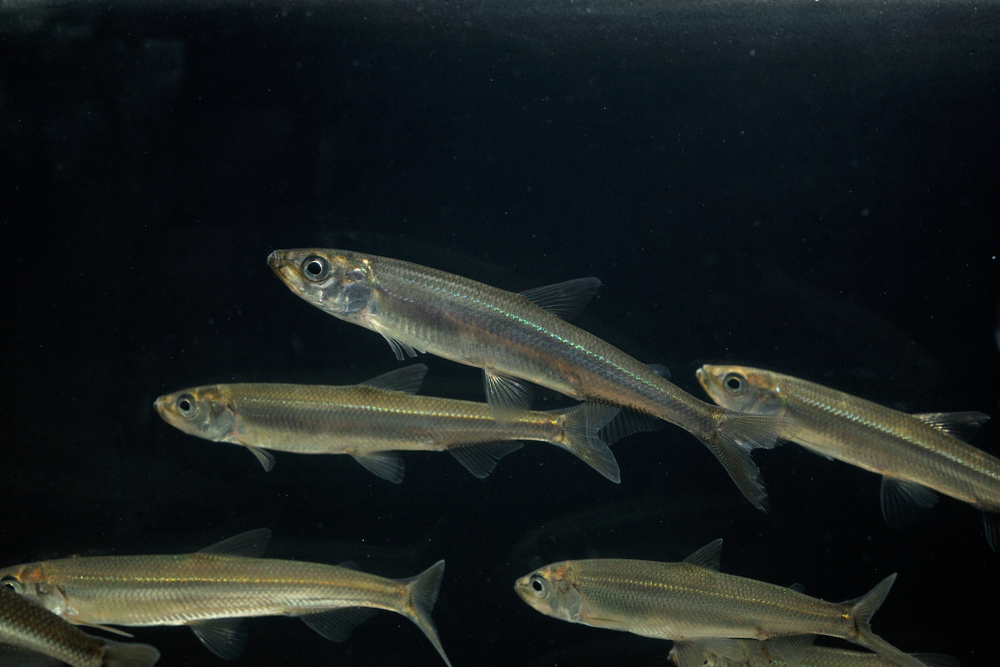
This fish belongs to the family Osmeridae and is a tiny, slender fish. The fish has an adipose fin on its back, similar to salmon and trout. Teeth and a long, thin body with iridescent purple, pink, and blue sides round out the features.
People commonly use dip-nets (e.g., term “smelt-dipping”) to catch these fish throughout their spawning time in April.
The Great Lakes’ smelt population has been declining, and smelt dipping suffers as a result. These days, Upper Peninsula streams are the best places to go smelt dipping.
During the winter, however, anglers engage in an unusual form of fishing with hooks and lines. Fishing for smelt is possible in a few inland lakes and Great Lakes bays by using nightlights to attract smelt from the bottom and tiny hooks with wax worms and spikes.
17. White Fish
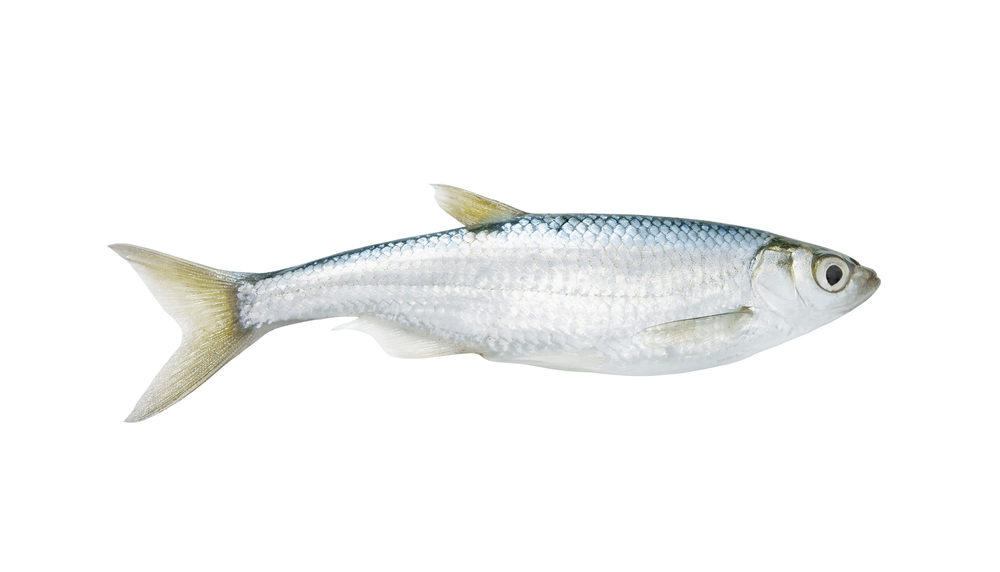
Also called Silversides, these fish have two dorsal fins, one of which is a fatty fin, a blunt nose, and fins that are clear or nearly clear. The lake whitefish, a trout/salmon hybrid, is a pale, wary fish.
As a result of its extraordinary taste, size, and propensity to school, the Great Lakes are a mainstay of commercial fishing for this species. Few sport anglers were aware of the specialized techniques needed to capture lake whitefish until recently.
However, things are changing, and anyone who has mastered the art of fishing for whitefish will agree that the effort is well worth it.
When the temperature rises in the summer, the solitary lake whitefish prefers to swim with schools as deep as 200 feet. These depths are the primary reason catching one necessitates additional skill.
18. Steelhead
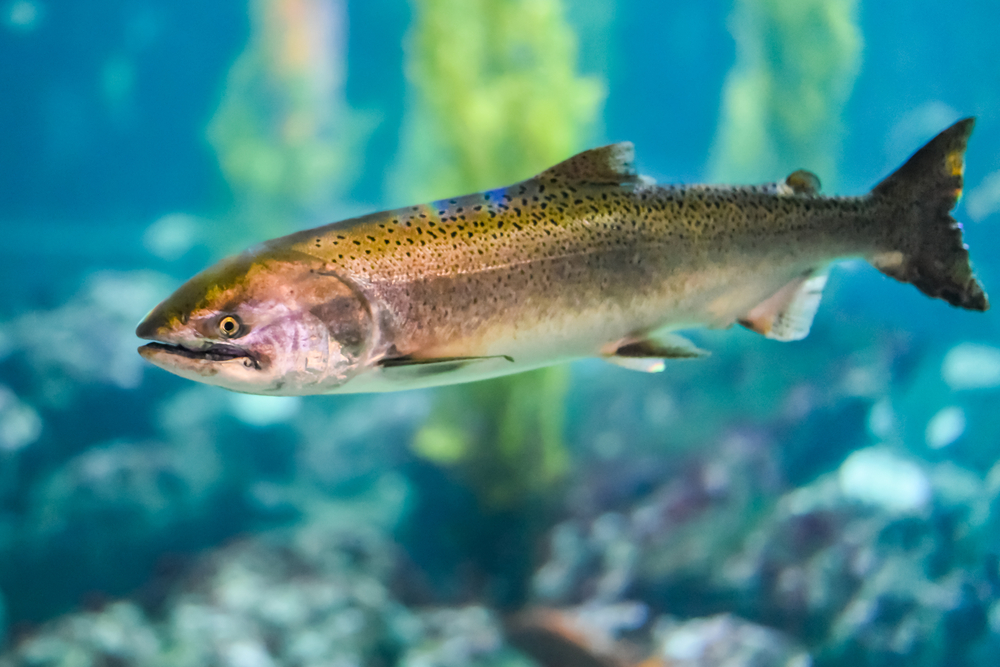
With two dorsal fins, a mouth, light spots on its tail, and up to 12 rays in the anal fin, you will be able to identify a steelhead in Lake Michigan.
These are migratory rainbow trout that spend most of their life in the ocean or Great Lakes.
Because steelheads are well-known fighters, they’re a common target for anglers. Trollers on the Great Lakes, pier fishers, and surf fishers are all after them. Many of the Great Lakes’ tributary streams have thriving salmon fisheries thanks to the smelt.
There are many delicious ways to book this tasty fish, and as a result, they have become one of the most popular sports fish in Michigan!
19. Northern Pike
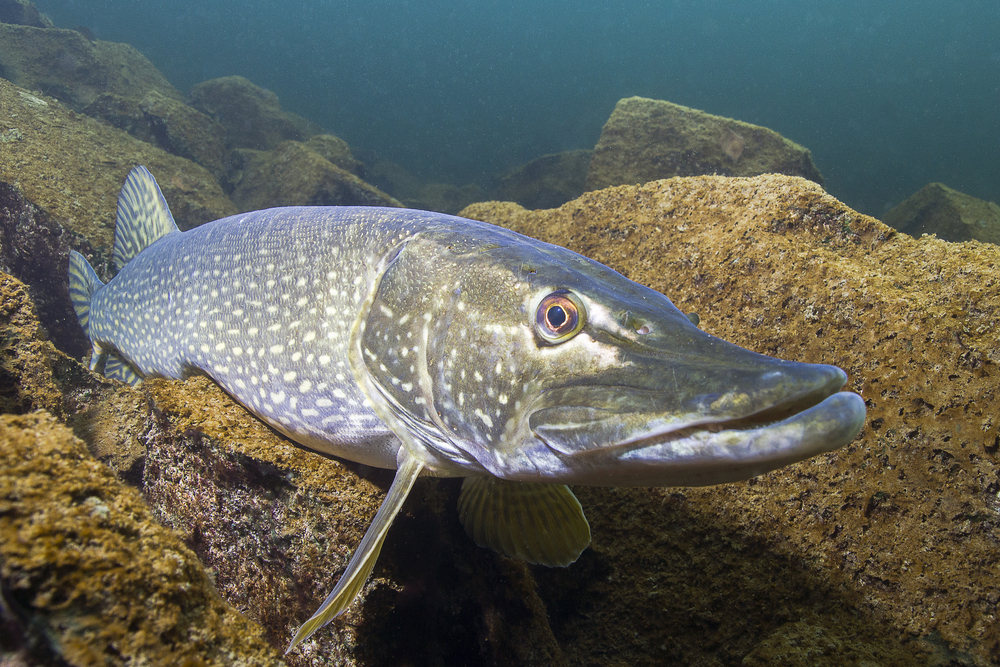
There are five to six submandibular pores on the upper half of the gill covering an entire cheek in this native fish, and it has a single dorsal fin (underside of the lower jaw).
The northern pike is related to the muskellunge and the grass pickerel in the Pike family (Esocidae).
The Great Lakes and inland waters have a reputation for having weedy shallows, which these fish are known to frequent. You’ll typically find them near log jams or downed timber along rivers.
The flavor of northern pike flesh is unsurpassed, making it a doubly rewarding game fish for which to hunt. Because of their dark pigmentation and unappealing mucous layer, most people skin or scale them very carefully.
20. Muskellunge
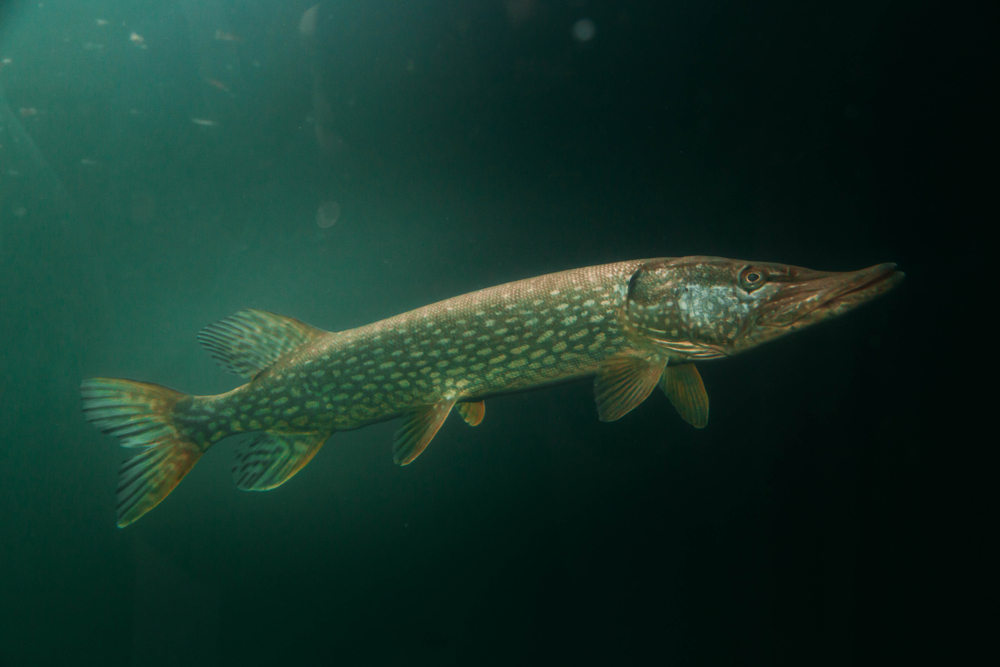
In addition to the gill cover, the single dorsal fin has scales and dark spots on a lighter background. The body and the single dorsal fin also have between six and ten submandibular pores (underside of the lower jaw). The muskellunge belongs to the family of fish known as pike (Esocidae)
These fish are plentiful in numerous lakes throughout Michigan’s Upper Peninsula, where naturally reproducing populations can be found.
Casting or trolling with large spinners, spoons, and plugs, usually on a wire leader, retrieving or searching quickly, or using large suckers as bait can catch them.

